Ukraine May Fall Short
Yet more leaked intelligence gives a gloomy forecast.
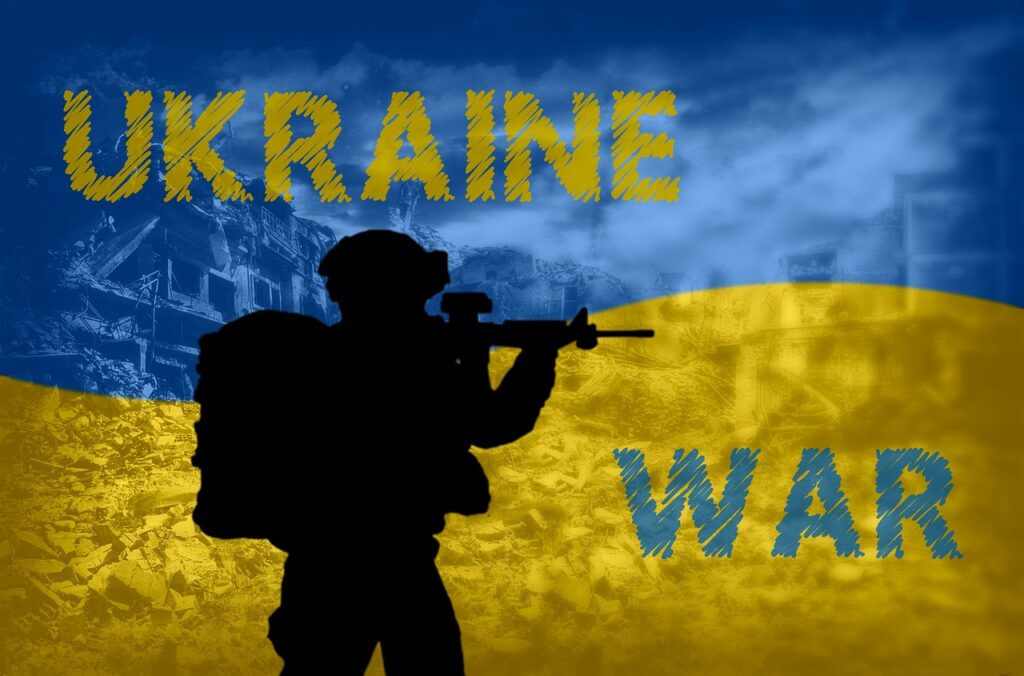
WaPo (“U.S. intelligence says Ukraine will fail to meet offensive’s key goal“):
The U.S. intelligence community assesses that Ukraine’s counteroffensive will fail to reach the key southeastern city of Melitopol, people familiar with the classified forecast told The Washington Post, a finding that, should it prove correct, would mean Kyiv won’t fulfill its principal objective of severing Russia’s land bridge to Crimea in this year’s push.
The grim assessment is based on Russia’s brutal proficiency in defending occupied territory through a phalanx of minefields and trenches, and is likely to prompt finger pointing inside Kyiv and Western capitals about why a counteroffensive that saw tens of billions of dollars of Western weapons and military equipment fell short of its goals.
Ukraine’s forces, which are pushing toward Melitopol from the town of Robotyne more than 50 miles away, will remain several miles outside of the city, U.S. officials said. U.S., Western and Ukrainian government officials interviewed for this report spoke on the condition of anonymity to discuss sensitive military operations.
The Office of the Director of National Intelligence declined to comment.
Melitopol is critical to Ukraine’s counteroffensive because it is considered the gateway to Crimea. The city is at the intersection of two important highways and a railroad line that allow Russia to move military personnel and equipment from the peninsula to other occupied territories in southern Ukraine.
The accompanying map shows how little territory Ukraine has regained thus far:
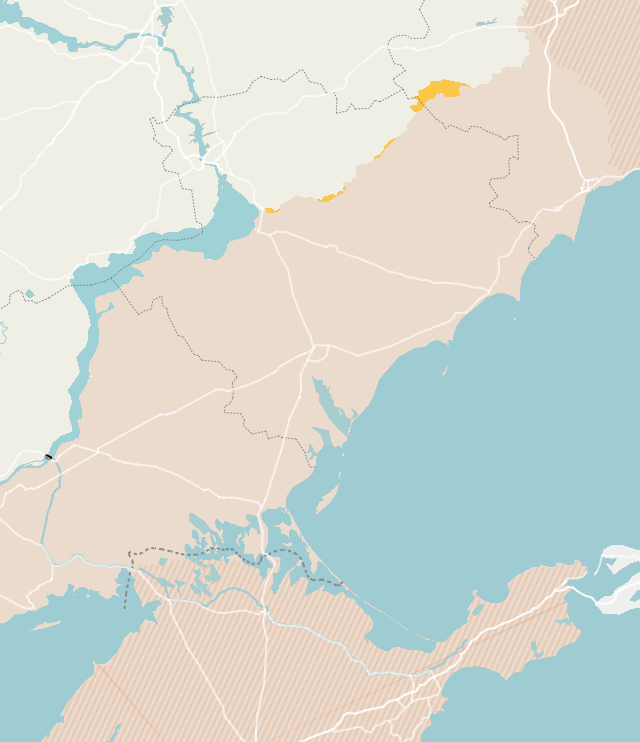
Ukraine launched the counteroffensive in early June hoping to replicate its stunning success in last fall’s push through the Kharkiv region.
But in the first week of fighting, Ukraine incurred major casualties against Russia’s well-prepared defenses despite having a range of newly acquired Western equipment, including U.S. Bradley Fighting Vehicles, German-made Leopard 2 tanks and specialized mine-clearing vehicles.
Joint war games conducted by the U.S., British and Ukrainian militaries anticipated such losses but envisioned Kyiv accepting the casualties as the cost of piercing through Russia’s main defensive line, said U.S. and Western officials.
But Ukraine chose to stem the losses on the battlefield and switch to a tactic of relying on smaller units to push forward across different areas of the front. That resulted in Ukraine making incremental gains in different pockets over the summer.
So . . . the objection is that the Ukrainians haven’t been willing to incur casualties at the rate those with no skin in the game had hoped, and are thus wasting the new equipment they’ve been given?
The bleak outlook, briefed to some Republicans and Democrats on Capitol Hill, has already prompted a blame game inside closed-door meetings. Some Republicans are now balking at President Biden’s request for an additional $20.6 billion in Ukraine aid given the offensive’s modest results. Other Republicans and, to a lesser extent, hawkish Democrats have faulted the administration for not sending more powerful weapons to Ukraine sooner.
U.S. officials reject criticisms that F-16 fighter jets or longer-range missile systems such as ATACMS would have resulted in a different outcome. “The problem remains piercing Russia’s main defensive line, and there’s no evidence these systems would’ve been a panacea,” a senior administration official said.
These debates are familiar, no? When militaries fall short of their war aims, they can always point to politicians not giving them everything they’ve asked for.
In an interview this week, Gen. Mark A. Milley, chairman of the Joint Chiefs of Staff, said the United States has been clear about the difficult task facingUkraine.
“I had said a couple of months ago that this offensive was going to be long, it’s going to be bloody it’s going to be slow,” he told The Post. “And that’s exactly what it is: long, bloody and slow, and it’s a very, very difficult fight.”
And, again, not our fight. [Edited to add: That is, the Ukrainians, not US or other NATO forces, are the ones putting their lives at risk.]
While not achieving its objectives, he noted Kyiv’s success in degrading Russian forces. “The Russians are in pretty rough shape,” he said. “They’ve suffered a huge amount of casualties. Their morale is not great.”
U.S. officials said the Pentagon recommended multiple times that Ukraine concentrate a large mass of forces on a single breakthrough point. Though Ukraine opted for a different strategy, officials said it was Kyiv’s call to make given the profound sacrifice Ukrainian troops were making on the battlefield.
Ukrainian Foreign Minister Dmytro Kuleba on Thursday acknowledged the slow pace of Ukraine’s counteroffensive but said Kyiv would not stop fighting until all its land is retaken. “We don’t care how long it takes,” he told the news agency Agence France-Presse.
He encouraged critics of the offensive to “go and join the foreign legion” if they wanted faster results. “It’s easy to say that you want everything to be faster when you are not there,” he said.
There’s something a bit churlish about complaining that one’s proxies aren’t fighting hard enough. Still, to the extent Western patience for pouring money and materiel into the Ukraine fight is running out, the willingness of the Ukrainians to “fight until all its land is retaken” faces a major challenge.
Ukrainian officials have said privately that timing depends on how quickly forces can penetrate the minefields — a difficult process that has strained the military’s mine-clearing resources across a wide swath of territory.
Analysts say the challenges Ukraine has faced are multifaceted, but nearly all agree that Russia surpassed expectations when it comes to its proficiency in defending occupied territory.
“The most deterministic factor of how this offensive has gone thus far is the quality of Russian defenses,” said Lee, noting Russia’s use of trenches, mines and aviation. “They had a lot of time and they prepared them very well … and made it very difficult for Ukraine to advance.”
I have no idea whose expectations we’re talking about here. But forces in the defense have always had a substantial advantage. And that’s surely especially true in a situation where the attacker cares much more about the devastation caused by the fight than does the defender. The Ukrainians actually want to live there once the fight is over, after all.
Questions have also been raised about how Ukraine committed its forces and in which areas.
The Ukrainians have for months poured tremendous resources into Bakhmut, including soldiers, ammunition and time, but they have lost control of the city and have made only modest gains in capturing territory around it. And while the close-in, trench-line fighting is different in Bakhmut from the problem of mines in the south, the focus has left some in the Bidenadministration concerned that overcommitting in the east may have eroded the potency of the counteroffensive in the south.
The new intelligence assessment aligns with a secret U.S. forecast from February indicating that shortfalls in equipment and force strength may mean that the counteroffensive will fall “well short” of Ukraine’s goal to sever the land bridge to Crimea by August. The assessment, detailed in a classified document leaked onto the social media app Discord, identified Melitopol or Mariupol as the objectives “to deny Russian overland access to Crimea.”
I continue to wonder who’s leaking all of these “secret” intelligence estimates and what their game is. Are they trying to lower expectations? Or are they trying to scuttle domestic support for the war effort?
U.S. officials said Washington was still open to Kyiv surprising skeptics and overcoming the odds. One defense official said it is possible that Ukraine could buck historical norms and continue the counteroffensive through the winter, when everything including keeping soldiers warm and stocked with food and ammunition becomes much more difficult.
But that would rely on several important factors, such as the amount of rest troops need after a hard fighting season. It would also depend on how much specialized equipment and cold-weather clothing they have on hand, the defense official said. But Moscow may also outperform during winter military operations.
“Russians are known to be capable of fighting in cold weather,” the official said.
What is this, 1941? The Ukrainians don’t have cold weather gear? And can’t be supplied with it if not? Winter is several months away and they’re at home.

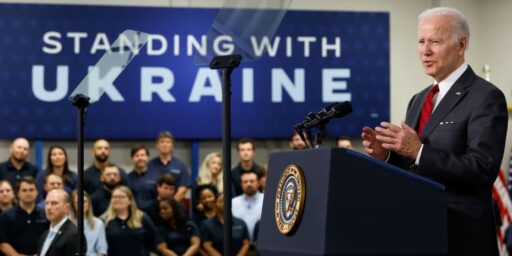

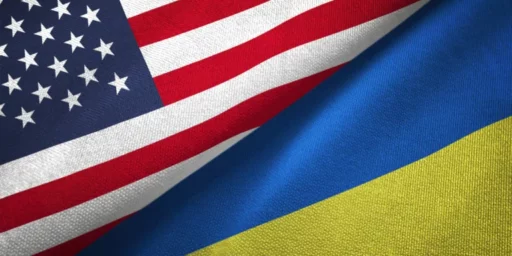
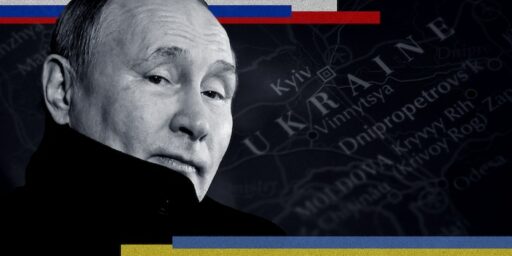
High early expectations were hopefully based on assessing that mobilized Rus soldiers would fail. Trenches without defenders would happen somewhere and all that NATO equipment would pour through. Comparisons were made to last fall’s Kharkiv offensive crushing weak opposition.
What happened resembles the Kherson offensive. It’s slow and costly but has an inexorable grinding quality.
Which the article doesn’t mention BTW. The campaign against bridges & railroads & headquarters proceeds and will make the difference. But slowly.
I suspect the leaks are coming out of the Senate. Specifically, certain Republican Senators that are Trump America First isolationists. We know the type.
Either way, it’s a much-needed reality check. American support for Ukraine is proving more resilient than some thought. Most Americans still understand when liberal democracy is under attack, whether here at home or in Ukraine.
Respectfully, I beg to differ. Putin has been waging various cold wars on the United States and our democratic allies for a while now. He is trying to destabilize and breakup both the US and the NATO, and he is not without successes there, assisted by his American puppets, stooges, sympathizers, and propagandists.
Our defense spending is somewhere north of $800 billion – $1 trillion yearly, depending on what/how you count. Compared to that, $50-$75 billion a year towards Ukraine, to encourage Putin’s dumb decision-making that quagmires his army and chokes his rule all without committing American troops to a hot war, is money well-spent.
@DK: We’re in agreement. I mean that it’s “not our fight” in the sense that we don’t have soldiers on the ground getting killed. Standing on the sidelines and bitching that the Ukrainians aren’t willing to pile up bodies faster to get the job done is problematic when we’re not sharing the risk.
@Scott:
I’d suspect House Armed Services Committee members Elise Stefanik or Matt Gaetz.
Fortunately for Ukraine, profligate defense spending seems the area where the Republican leadership both will not bend to MAGA, and remains simpatico with ranking Democrats. The military-industrial complex really is too big to fail.
So maybe a counterleak of more rosy intel from Rep. Pollyanna (D/R-Kyiv) incoming to the New York Times in 4, 3, 2, 1…
@James Joyner:
Ah I see, I read it wrong, sorry. Gotcha. And yup, I couldn’t agree more about this impatient sniping from the sidelines.
BTW, here is an interesting set of statistics detailing aid to Ukraine as a percentage of GDP. We may be the lead in absolute terms but nowhere near the lead WRT to capability. It is clear that front line nations like the Baltic States know what on the line here.
Total bilateral aid commitments to Ukraine as a percentage of donor gross domestic product (GDP) between January 24, 2022 and May 31, 2023, by country
Granted numbers can be sliced and diced in many ways. This is just bilateral aid. Aid from quasi governmental organizations like the EU and EC is another source.
It was always optimistic that Ukraine’s offensive would resemble Sherman’s march to the sea, given that the Russians had a year to dig in and build fortifications. Add to that the preferred, NATO offence plan of coordinated attack has always lacked a key component in Ukraine, control of the airspace or even the airspace being a draw.
Those who saw the war unfolding as one of attrition are being proved correct.
This was part of the tranche of documents that stupid Air Force kid leaked to his friends on Discord. I don’t think there was a “game” here.
But speaking of scuttling support for the effort, overpromising and underdelivering does that. As I keep repeating, hopium is not a strategy, and it’s been clear for many months now that this offensive would be very difficult – at best. Yet courtiers and no-nothings hyped it up, set unrealistic expectations, and have, as a result, damaged the credibility of our supportive efforts, which makes political sustainment more difficult going forward.
This is probably the most frustrating part for me because I could see the problems as a retired intel analysis using only open-source (and leaked) info, along with the judgments of experts like Dara Lind, Michael Koffman, Rob Lee, and defense analysts like Shashank Joshi. It’s not like secret info was needed to find to reach a realistic assessment. While it’s understandable that Ukrainian supporters want to see Ukraine win (and I’m among them), it doesn’t help to inaccurately portray the military realities on the ground because now we will witness the costs of doing that, and those who hyped this offensive have lost credibility and damaged the whole enterprise.
@JohnMc is exactly correct in pointing out that too many leaped on the success of the Kharkiv offensive as dispositive for the future while ignoring Kherson.
We could catalog the analytical and other errors, but one big one IMO was the expectation that green Ukrainian units with a few months of training could synchronize a combined-arms maneuver warfare offensive, having never demonstrated that capability, with no air superiority. NATO training over the last decade has improved the capabilities of Ukrainian forces at the individual and small unit levels, but the Ukrainian military still has the DNA of a Soviet artillery army. It was foolish for us to expect them to achieve something the US hasn’t done since WWII or maybe Korea.
And there continue to be those who focus on wunderwaffen like ATACMS and F-16’s, but these are more know-nothings, to put it harshly. What Ukraine probably needed more than anything for this offensive is breaching equipment – which is the gear that actually enables penetration of layered, fixed defenses, especially minefields.
Anyway, I’ll bring up again the problem of sustainment. The Western world supporting Ukraine doesn’t have the military production capacity to meet Ukraine’s needs. We’ve been supplying them primarily out of stockpiles, which obviously can’t last forever. In some cases, like artillery production, we’re increasing production capacity, but that will take a couple of years. To paraphrase Donald Rumsfeld, you support a war with the defense production you have, not the one you might want or need. This is a case where historical decisions have come home to roost, especially European NATO countries who have – since the end of the cold war, severely underinvested in defense. And it seems like this asymmetrical burden sharing will continue as the big European countries continue to slow-roll production increases. Germany, for example, can produce two Leopard tanks per month. Two. Germany ordered replacements for the tanks it gave to Ukraine, which won’t start arriving until 2025.
So what does the future hold? I continue to believe that the character of this war strongly favors the defense, and I don’t see that changing. In terms of political objectives, that means neither side has the capability to achieve its stated war aims. Therefore, the attritional character of this conflict will likely continue until exhaustion by one or both sides results in an armistace or ceasefire or until there is some decisive shift one way or the other that we can’t really predict at this point.
Even Obama was willing to send them blankets.
Not mentioned is that Ukraine has severely weakened the bridge to Crimea, have driven Russian naval forces out and to Russian ports in the eastern Black Sea. Ports where they are even now subject to attack by Ukrainian seaborne drones. And they’ve given int’l shipping the 2-week warning to stay out of those Russian ports or be attacked after demonstrating capability on an empty returning Russian tanker.
This has put the Russian forces in Crimea from asset to near liability which they will become if Ukraine is able to get within a dozen miles of the land bridge route on the western side.
And from reports, Ukrainian special forces are being effective behind the front lines. Ultimately, Ukraine has to occupy, destroy or other wise control a couple critical rail switching cities….in Russia, which would also change the tenor of western rhetoric.
If winter comes, Ukraine is able to crimp the western land bridge to Crimea, the story will be one of famine and need for evacuation which will not only lose the staging position but be a global prestige blow to Russia.
What person or persons that anyone takes seriously said the Ukrainian offensive would be anything other than grueling, grinding, and difficult?
If anyone wrote headlines or assessments that said it would be snap crackle pop easy or that Ukraine was headed for victory soon, God bless that man.
@Sleeping Dog:
I’m surprised to learn there’s apparently people out there who are surprised. Who are they?
Um…looks like Ukraine is getting it’s F-16’s
https://apnews.com/article/russia-ukraine-war-moscow-drones-8268c5de812e5d852cc28443a00123f7
Ukraine’s push looks more like a sort of siege than a blitz. They are, it seems to me, grinding down the resistance of a superior – in manpower and materiel – force. Of course that’s going to go slowly right up to the day it stops going slowly.
What I’ve heard is that when the Ukranians take some ground, the Russians typically counterattack, and this is where Russia takes its biggest losses. This is a very effective way to do things, but it’s going to go slowly. It’s their necks on the line, so be it.
In other amusing tidbits, I have seen where Ukrainian soldiers have taken out tanks by strapping an anti-tank mine onto a cheap drone and flying it up the rear of a Russian tank, hitting its radiator. No radiator means tank is not moving. Static tanks are not super useful.
@JKB:
And of course your cult leader was willing to support Ukraine if only Ukraine would fabricate some lies about Biden. Right?
Right? Hello?
I think we need to remember that our interests and those of Ukraine are parallel but not identical. A Ukraine free of Russian invaders and welcomed into NATO is their goal. Our goal is bleeding Russia and in the process sending a message to China. The Ukrainians have been amazing and have made progress toward their goal. Our goal is being achieved every day the Russians fail to make progress. We don’t need Ukraine to win, we just need Russia to lose. The money we’re giving Ukraine is one of the greatest bargains in the history of international affairs.
@Michael Reynolds:
Oops!
Hahahahaha.
With the F-16s I keep remembering the WWII Flying Tigers, The American Volunteer Group. They were American military trained pilots, flying American provided airplanes. But they were not Navy, Marine, or U. S. Army Air Corps at the time. They were independent contactors paid by the Chinese government. The U. S. government helped recruit from active duty U. S. pilots and mechanics and gave them a good deal on resigning and later rejoining. The F-16 is so common around the world there has to be a large pool of well trained F-16 drivers, and sustainers. If the Ukrainians can get airplanes, training English speaking pilots to interface with English speaking controllers in the Ukrainian system would seem quicker than training Ukrainian pilots on a new airplane. I can’t help but picture a bunch of F-16s with painted tiger mouths and Ukrainian tridents with American, Danish, Polish, Norwegian, etc. mercenary pilots. But proxy war is a delicate dance and such a thing would probably be regarded as over the rather blurred lines.
And US intelligence forecast Kyiv would fall in a week.
Meh.
(I also thought Russia could take Kyiv, tbf. But didn’t expect them to dick about with an “attack everywhere all at once” approach, in my defence. Mea culpa.)
@gVOR10:
It’s a fair bet there will be volunteers from the ranks of ex-fighter jocks willing to sign up.
About 35 minutes into this is a pretty good dive into the problems with US supplying F16s, one of which is financial. I suspect that aspect is why Biden is “encouraging” the Euros with F16s to send theirs. It also lays out the case for the Grippen being a better fit because it was designed to operate with conscript maintenance. He neglects to mention how few of those birds have been made and are available though. It’s up to the Swedes.